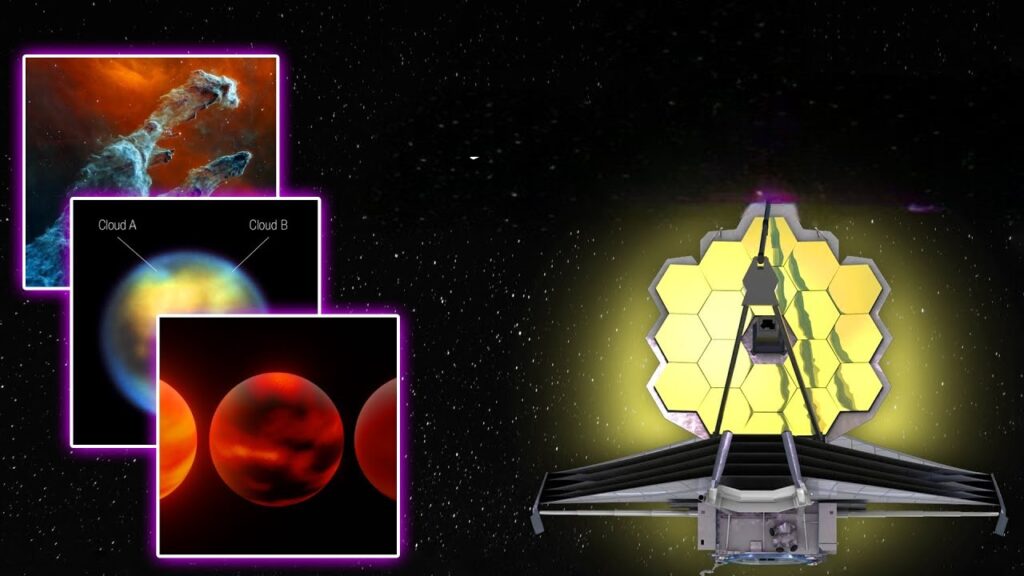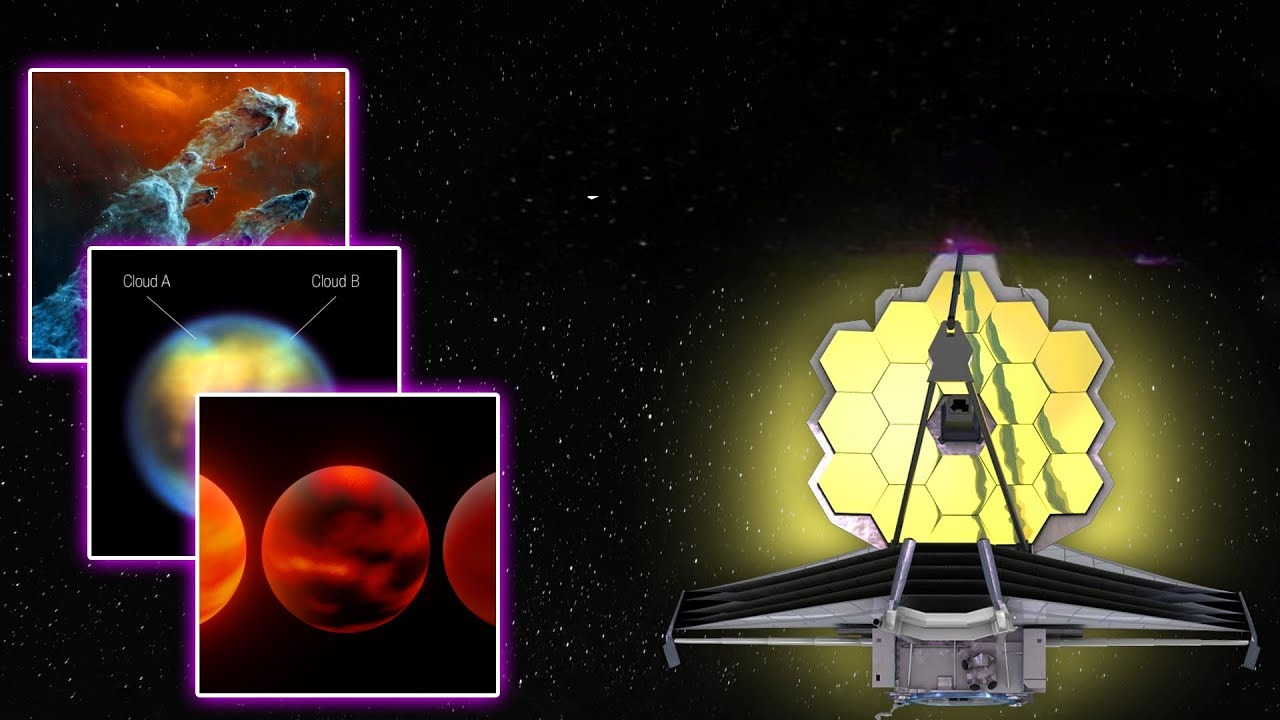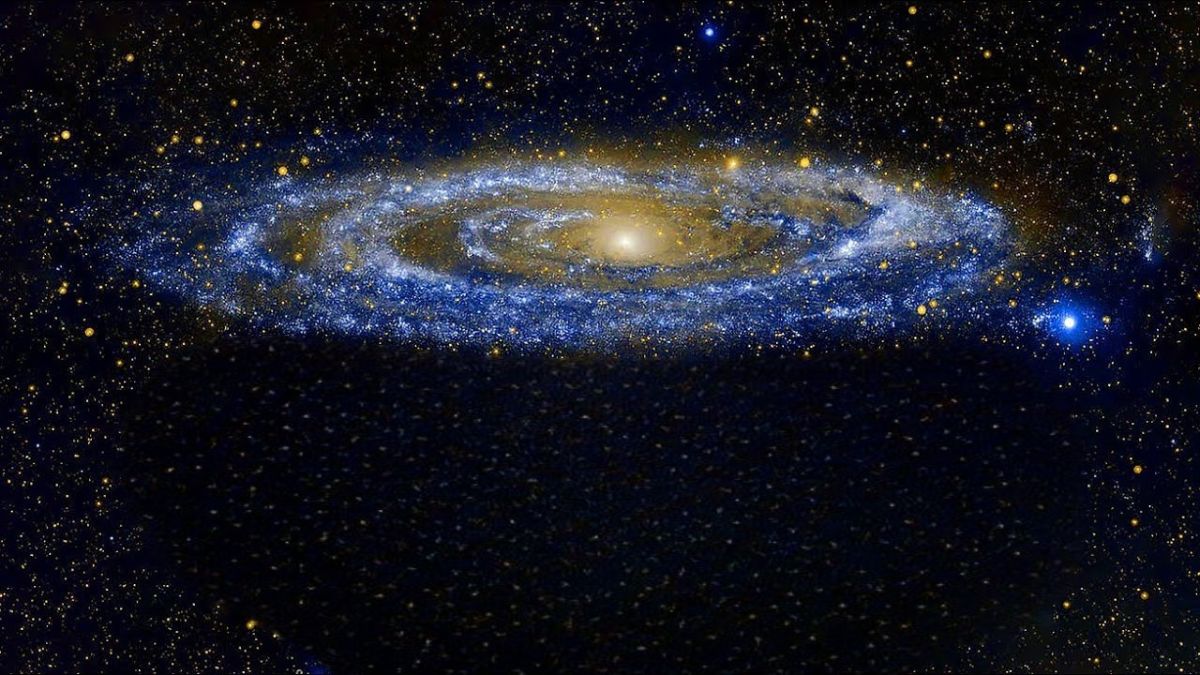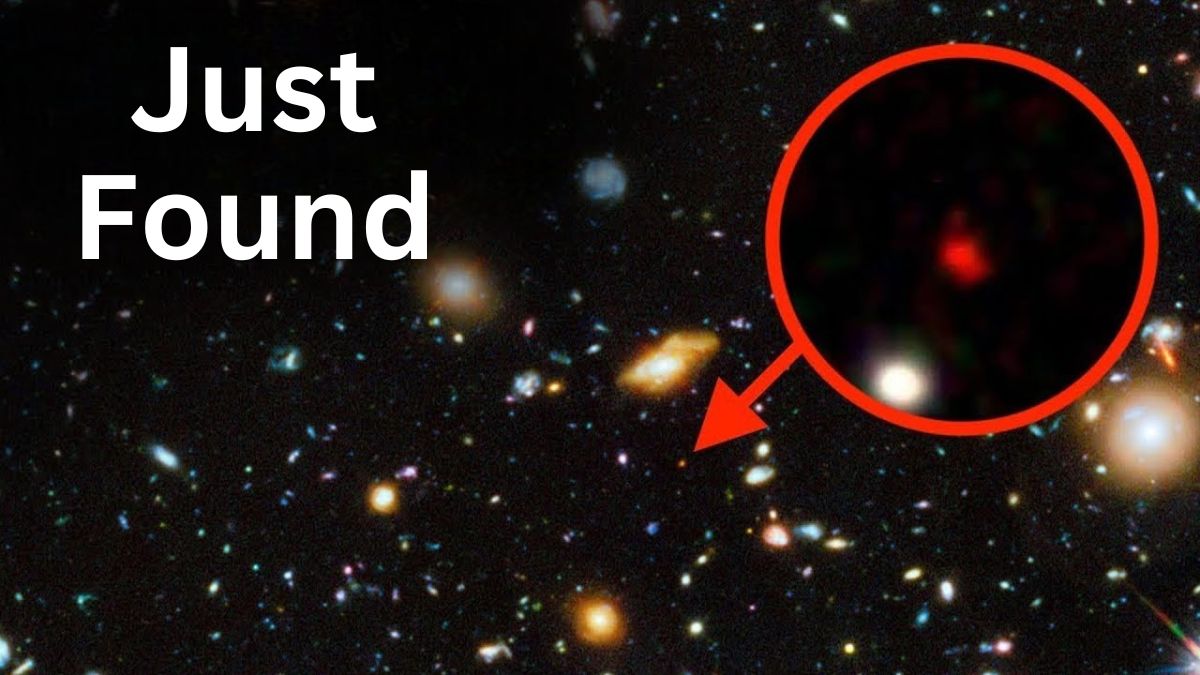
Imagine James Webb is my name, and I’m an explorer.
James Webb’s Magnificent Photographs and Discoveries Never Before Seen Hey, allow me to introduce myself.
I’m here to show you some of the incredible images and discoveries I’ve made on my travels.
I’ve seen everything, from galaxies that are millions of light years away to supernovae that cannot be seen by humans!
Let me take you on a journey across the cosmos and show you some of the most incredible sights I can think of.
Get going!
Have you seen this tiny asteroid that photobombed one of my universe images before I start showing you what I’ve seen thus far?
The bravado!
It was the smallest thing I could see, almost as big as Rome’s Colosseum!
- 1) The universe's deepest infrared view to date: Webb's first task was to provide astronomers with the most comprehensive and clear infrared view yet of the vast universe.
- 2) The James Webb Space Telescope's analysis of WASP-96 b's atmosphere.
- 3. The Southern Ring Nebula appears as shown in this observation when viewed face-on.
- — 4) Stephan's Quintet The James Webb Space Telescope in NASA records the group of five galaxies known as Stephan's Quintet in a novel manner.
- — 5) Cosmic Cliffs in the Carina Nebula With the help of NASA's new James Webb Space Telescope, areas of star birth in a young star-forming region called NGC 3324 in the Carina Nebula that were previously obscured have been discovered.
- — 6) Jupiter and Europa The James Webb Space Telescope in the National Aeronautics and Space Administration (NASA) has provided stunning new views of Jupiter, including a look at the planet's recognizable Great Red Spot and the moons that surround it. These views also reveal infrared details about our Solar System.
- — 8) NGC 628, also known as the "Phantom Galaxy" A stunning image captured by the James Webb Space Telescope reveals the intricate details of the Phantom Galaxy (M74), which can be found in the constellation Pisces.
- — 9) The bizarre Cartwheel Galaxy has been revealed in unprecedented detail thanks to the James Webb Space Telescope's powerful infrared capabilities.
- — 10) Jupiter and its aurorae NASA's James Webb Space Telescope has captured stunning new images of Jupiter, providing researchers with additional insights into the inner life of the planet.
- — 11) A combined image of two galaxies from the NASA/ESA/CSA James Webb Space Telescope (NIR) and the NASA/ESA Hubble Space Telescope (Optical) Researchers were able to follow the light emitted by the large elliptical galaxy on the left through the spiral galaxy on the right thanks to the combination of data from these two telescopes.
- 12) The distant Wolf-Rayet star WR140 was captured in awe-inspiring detail by the much-anticipated James Webb Space Telescope (JWST) in July. The star was surrounded by strange concentric shells that radiated outward.
- — 13) The Pillars of Creation NASA's James Webb Space Telescope captured a vivid and highly detailed landscape of the iconic Pillars of Creation.
- 15) WASP-39b Atmosphere Update The James Webb Space Telescope's observations of WASP-39b have revealed the first discovery of a photochemical reaction product and a comprehensive chemical composition of the exoplanet's atmosphere.
- 16) Dust disk that is forming a planet around a small young star called AU MIC NASA's James Webb Space Telescope (Webb) has observed the red dwarf star AU Microscopii (or AU Mic) in the constellation Microscopium, which is 32 light-years away. This gives a look back at the system's history.
- — 18) Webb Spectra (NIRSpec MSA Emission Spectra) Identify Galaxies in the Very Early Universe.
1) The universe’s deepest infrared view to date: Webb’s first task was to provide astronomers with the most comprehensive and clear infrared view yet of the vast universe.
The galaxy cluster SMACS 0723, its first deep field, contains thousands of galaxies, including the faintest infrared objects ever observed.
This image, roughly the size of a grain of sand held at arm’s length, was taken by the telescope of a very small portion of the vast universe.
Some of the more distant galaxies, some of which were observed when the universe was only a billion years old, are amplified by the galaxy cluster’s combined mass, which serves as a magnifying lens.
Webb’s Near-Infrared Camera (NIRCam) 12 captured this deep field using images from a variety of wavelengths.
5 hours to take, which is longer than the time it took the Hubble Space Telescope to get its deepest field.
Hubble, please!
Let’s discuss science now!
This picture shows the system group SMACS 0723 from 4.6 billion years ago, when the cluster was surrounded by numerous galaxies.
To learn more about this cluster, researchers will be able to break down and analyze Webb’s data.
Mid-infrared light from Webb’s Mid-Infrared Instrument (MIRI) was also observed in this field.
The most comprehensive look yet at galaxies, including their faint features like star clusters and diffused areas, has been provided by Webb’s NIRCam.
Before reaching us and going back to the big bang, the light from these galaxies had to travel billions of years.
Webb is designed to observe this shift in the wavelength of visible light to infrared.
Researchers will be able to learn more about the galaxies’ mass, age, origin, and components after analyzing the data.
The field’s prominent arcs are also visible.
This is because, like a magnifying glass distorting an image, the strong gravitational pull of the galaxy cluster is bending the light from more distant galaxies behind it.
Also seen are stars, which appear brighter and have diffraction spikes that can be seen at shorter wavelengths.
Blue galaxies have fewer dust particles, red galaxies have an abundance of dust, and green galaxies have a mixture of hydrocarbons and other elements, according to Webb’s MIRI image. Dust clouds are necessary for star formation and life itself.
I am in awe of the beautiful and vibrant colors!
Can you imagine how great the rest of Webb’s work will be if this were only his first picture?
2) The James Webb Space Telescope’s analysis of WASP-96 b’s atmosphere.
The James Webb Space Telescope, built by NASA, has detected the distinct signature of water as well as evidence of clouds and haze in the atmosphere of a hot, puffy gas giant orbiting a distant star that is similar to our Sun.
This is a significant milestone in the search for habitable planets beyond Earth and the most comprehensive observation of its kind to date.
This exoplanet, which goes by the name WASP-96 b and is 1,150 light-years away in the constellation Phoenix, is much puffier than any planet in our Solar System and has a mass that is less than half that of Jupiter.
It has a temperature of more than 1000 degrees Fahrenheit and completes an orbit around its star in just 312 days.
WASP-96 b is an ideal target for atmospheric research because of this combination of factors.
A light curve depicting the overall dimming of starlight during the transit was taken on June 21 by Webb’s Near-Infrared Imager and Slitless Spectrograph (NIRISS). A transmission spectrum depicting the brightness decrease of infrared wavelengths between 0 and 1 was also taken 6 and 2.8 microns.
Contrary to previous observations, the spectrum analysis revealed the presence of water, haze, and clouds.
The Webb telescope was able to detect brightness variations of a few hundred parts per million and color variations of one thousandth of a micron.
Webb’s extraordinary capabilities for studying exoplanets are demonstrated by this observation.
A quarter of its observation time will be dedicated to the study of exoplanets, and its spectroscopy will be used to survey several dozen planets, from rocky worlds to giants, over the next year.
It is now abundantly clear that Webb possesses the capability to analyze the atmospheres of exoplanets, including those of planets that might be habitable, with remarkable precision.
NASA’s James Webb Space Telescope has discovered for the first time that the dust-covered faint star at the scene’s center is the result of thousands of years of gas and dust rings being released outward.
The most recent image of NGC 3132, the Southern Ring Nebula 2,500 light-years away, was captured by Webb’s two cameras.
Webb’s Near-Infrared Camera and Mid-Infrared Instrument reveal previously unseen details of the compact system of two stars.
3. The Southern Ring Nebula appears as shown in this observation when viewed face-on.
However, if it were turned so that it could be seen from the edge on, its three-dimensional shape would be more apparent—it has two bowls at the base that are positioned opposite one another and are joined in the middle by a large opening.
At some point, the brighter star, which is still in the early stages of its evolution, is likely to release a planetary nebula.
Both stars are visible in the left NIRCam image, while dust is visible for the first time around the second star in the right MIRI image.
The nebula’s appearance is influenced by their brighter companion’s stirring of the gas and dust as the two stars rotate around one another.
Astronomers can learn more about the stars’ mass-loss history and how their orbits affect the nebula’s environment with this information.
The molecules and dust that the stars release can travel billions of years and possibly form a new star or planet before eventually dispersing into the surrounding universe.
The planetary nebula is surrounded by thin beams of light, as evidenced by the NIRCam data.
Similar to how sunlight shines through clouds, gaps in the gas and dust make it possible to see the central stars’ light.
Because these phenomena have been visible for tens of thousands of years, studying a planetary nebula is similar to watching a movie in slow motion.
Researchers are able to examine the gas and dust contained in each shell in great detail thanks to the star’s ability to expel them.
— 4) Stephan’s Quintet The James Webb Space Telescope in NASA records the group of five galaxies known as Stephan’s Quintet in a novel manner.
Webb’s largest image to date, it has approximately 1,000 distinct image files and covers one fifth of the moon’s surface.
The galaxy’s sparkling star clusters, starbirth regions, and gravitationally induced tails of stars, gas, and dust can be seen in unprecedented detail thanks to its infrared technology and high resolution.
As NGC 7318B, one of the galaxies, passes through the other galaxies, it emits impressive shockwaves.
This sheds light on the possibility that early galaxy evolution was driven by interactions between galaxies.
In 1877, Édouard Stephan found Stephan’s Quintet in the constellation Pegasus.
Despite being referred to as a “quintet,” only four of the galaxies are tightly clustered together, with NGC 7320, the fifth and leftmost galaxy, in the foreground.
The other four galaxies—NGC 7317, NGC 7318A, NGC 7318B, and NGC 7319—are almost 290 million light-years away, while NGC 7320 is 40 million light-years away.
Astronomers were able to study the merging and interactions between galaxies, which are fundamental to the evolution of all galaxies but are rarely observed in such great detail, thanks to this close proximity.
For instance, the gas in these galaxies can be agitated and star formation sparked in one another.
An active galactic nucleus, a supermassive black hole 24 million times the mass of the Sun, can be found in the group’s highest galaxy, NGC 7319.
It generates 40 billion Suns of light energy.
The integral field units (IFUs) further provided scientists with a “data cube” of the galactic core’s spectral features, which was used to study this in greater depth using the Near-Infrared Spectrograph (NIRSpec) and Mid-Infrared Instrument (MIRI).
In the meantime, Webb discovered a vast sea of distant background galaxies and was able to identify individual stars in NGC 7320 as well as its bright core.
In general, the information gathered by Webb can provide a wealth of useful information regarding the rate at which supermassive black holes feed and grow, regions where stars are formed, and dust emission.
Stephan’s Quintet’s five galaxies make up Hickson Compact Group 92 (HCG 92), which is a great place to study the cosmic dance of merging galaxies.
— 5) Cosmic Cliffs in the Carina Nebula With the help of NASA’s new James Webb Space Telescope, areas of star birth in a young star-forming region called NGC 3324 in the Carina Nebula that were previously obscured have been discovered.
This area is known as the Cosmic Cliffs, and the image’s tallest peaks are approximately 7 light-years in height. They appear to be a landscape of rocky “mountains” and “valleys” dotted with stars.
The nebula’s wall is being eroded away by the young stars’ blistering ultraviolet radiation, which is creating dramatic pillars above the glowing gas.
In addition, the relentless radiation causes hot gas and dust to flow out of the area, creating the illusion of “steam” rising from celestial “mountains.”
Webb is able to answer difficult questions about star formation and capture protostellar jets and individual stars that are completely hidden in visible-light images.
The information gathered from NGC 3324 will assist us in comprehending the factors that initiate and restrict star formation, as well as the impact of star formation on enormous dust and gas clouds.
NGC 3324 is in the constellation Carina and was catalogued by James Dunlop in 1826. It is approximately 7,600 light-years away.
The Keyhole Nebula and Eta Carinae, an active and unstable supergiant star, are located in the Carina Nebula, where NGC 3324 is located.
— 6) Jupiter and Europa The James Webb Space Telescope in the National Aeronautics and Space Administration (NASA) has provided stunning new views of Jupiter, including a look at the planet’s recognizable Great Red Spot and the moons that surround it. These views also reveal infrared details about our Solar System.
Through image processing, the NIRCam instrument of the telescope captured distinct bands encircling the planet and the enormous storm.
Scientists were pleasantly surprised by the results because of the astonishing clarity of the image, which captured Jupiter’s thin rings and hazes as well as minor details like Europa, Thebe, and Metis, which can be seen to the left of the Great Red Spot.
“From the faintest, most distant observable galaxies to planets in our own cosmic backyard, the James Webb Space Telescope has the full grasp of what it can observe,” said Bryan Holler of the Space Telescope Science Institute.
The infrared capabilities of the telescope offer astronomers a unique opportunity to observe Jupiter’s rings and monitor Europa and Saturn’s Enceladus for possible material-spitting plumes.
“It’s really exciting to think of the capability and opportunity that we have for observing these kinds of objects in our solar system,” said Stefanie Milam, Webb’s deputy project scientist at NASA Goddard Space Flight Center.
Using the James Webb Space Telescope, astronomers examined the enormous Abell 2744 galaxy cluster, which was serving as a gravitational lens to distort an image of more distant galaxies. These two candidates for the most distant known galaxies are GLASS-z11 and GLASS-z13.
From the initial data of the Grism Lens-Amplified Survey from Space (GLASS), the Harvard–Smithsonian Center for Astrophysics team led by Rohan Naidu identified two galaxies: GLASS-z11 and GLASS-z13.
The fact that the galaxies have redshifts of 11 and 13, respectively, suggests that they were in existence around 400 million to 300 million years after the Big Bang, or four billion years ago.
Although the Near Infrared Camera (NIRCam) was used to determine the redshifts, a more in-depth spectrum analysis using the Near Infrared Spectrograph (NIRSpec) will be required to confirm them.
The discovery of the two galaxies in a 50-square-arcminutes region of the sky surprised the astronomers.
The fact that there were so many bright galaxies in the early universe suggests that they occur more frequently than previously thought.
Today, the galaxies known as GLASS-z11 and GLASS-z13 have masses ranging from 3,000 to 4,500 light-years across and approximately a billion stars each.
Nevertheless, for their time, they are substantial.
In addition, in contrast to the usual clumpy structure of high-redshift galaxies, the two galaxies exhibit a spiral disk-like structure.
GLASS-z11 and GLASS-z13, according to the theory of the formation of galaxies, have presumably grown in size and evolved into massive elliptical galaxies in the past 13.4 billion years old and lies approximately 32 billion light-years away from us, which is too far for any telescope to see.
— 8) NGC 628, also known as the “Phantom Galaxy” A stunning image captured by the James Webb Space Telescope reveals the intricate details of the Phantom Galaxy (M74), which can be found in the constellation Pisces.
Webb was able to observe the gas and dust filaments that are located in the spiral arms that extend outward from the nucleus of M74, which is famous for its grand design of a spiral structure. M74 lies almost face-on to Earth.
A clear view of its nuclear star cluster is provided by the absence of gas in its core.
The PHANGS team is using Webb’s mid-infrared vision, Hubble’s ultraviolet and visible capabilities, radio images from the Atacama Large Millimeter/submillimeter Array, ALMA, and the galaxy’s star formation to learn more about M74, which is 32 million light-years away.
Astronomers gain even more insight than Webb alone by combining data from a wide range of telescopes across the electromagnetic spectrum.
— 9) The bizarre Cartwheel Galaxy has been revealed in unprecedented detail thanks to the James Webb Space Telescope’s powerful infrared capabilities.
The result of a collision between two galaxies is this rare cosmic sight, 500 million light-years away.
The image shows a galaxy’s outer ring with a vibrant star formation and two rings that expand outward, like ripples in a pond.
Webb’s Near-Infrared Camera reveals numerous individual stars as well as the distinction between the clumpy shapes of younger stars and the smooth distribution of older star populations.
The Cartwheel Galaxy’s evolution over the course of billions of years is vividly depicted in this new image.
Webb reveals the Cartwheel Galaxy’s dust in greater detail by utilizing MIRI data that appear red in the composite image.
In the form of a series of spiraling spokes, this image depicts various chemical compounds, silicate dust, and hydrocarbons similar to those found on Earth.
In 2018, the spokes could be seen in previous Hubble observations, but the Webb image shows them much more clearly.
Because it was once a normal spiral galaxy like the Milky Way before its collision, this observation makes it abundantly clear that the Cartwheel is undergoing evolution.
The galaxy’s past and future are better understood thanks to this image.
— 10) Jupiter and its aurorae NASA’s James Webb Space Telescope has captured stunning new images of Jupiter, providing researchers with additional insights into the inner life of the planet.
The final images, which show auroras and hazes swirling around Jupiter’s poles as well as the Great Red Spot, a storm so large it could swallow Earth, were processed with assistance from scientists.
Jupiter’s abundance of activity is due to its powerful storms, strong winds, stunning auroras, and extreme temperatures and pressures.
A compilation of images taken by the Webb observatory’s Near-Infrared Camera (NIRCam) shows the auroras at Jupiter’s north and south poles.
It has been mapped onto the visible spectrum, with redder colors representing the longest wavelengths and bluer colors representing the shortest wavelengths, in order to make infrared light visible to the human eye.
The images were created by scientists and citizen scientist Judy Schmidt from the observatory’s data.
The hazes swirling around the poles in yellow and green, as well as light from a deeper main cloud in blue, are shown in the standalone view of Jupiter through the reddest filter.
The Great Red Spot and the equatorial region of Jupiter have high-altitude hazes, while the dark ribbons north of the equator have little cloud cover, according to scientists.
The convective storm tops likely condensed in the high-altitude clouds, as evidenced by the white spots and streaks.
Jupiter’s rapid rotation makes it challenging to combine multiple images into a single view.
In order for the images to make sense, scientists need to make digital adjustments to stack them.
— 11) A combined image of two galaxies from the NASA/ESA/CSA James Webb Space Telescope (NIR) and the NASA/ESA Hubble Space Telescope (Optical) Researchers were able to follow the light emitted by the large elliptical galaxy on the left through the spiral galaxy on the right thanks to the combination of data from these two telescopes.
The researchers were able to examine the effects of interstellar dust in the spiral galaxy with the help of this image of VV 191, which includes near-infrared light from the Webb telescope as well as ultraviolet and visible light from the Hubble telescope.
The extended, dusty spiral arms of the galaxy can be observed in greater detail using Webb’s near-infrared data, giving the impression that they overlap the central bulge of the bright white elliptical galaxy on the left.
There is no evidence of interaction between the two galaxies, despite their astronomical proximity being relatively close.
Keep an eye on the background!
Similar to Webb’s other images, this one of VV 191 shows multiple galaxies millions of light-years away.
On the upper left side of the ellipsoid galaxy, for instance, you can see two fuzzy spiral galaxies that appear to be roughly the same size but have distinct colors.
Although experts still need to acquire spectra to determine which one is which, it is possible that one is covered in dust while the other is far away.
12) The distant Wolf-Rayet star WR140 was captured in awe-inspiring detail by the much-anticipated James Webb Space Telescope (JWST) in July. The star was surrounded by strange concentric shells that radiated outward.
The image, which was posted on Twitter by citizen scientist Judy Schmidt, sparked a flurry of responses and debate regarding the pattern’s origin.
Mark McCaughrean of the JWST Science Working Group looked into the possibility that this happened because the companion star of the star made the dust take on an odd but consistent shape.
Since then, the project’s principal investigator, Ryan Lau, has written a paper that will soon be published and delves deeper into this subject.
Despite the image’s awe-inspiring nature, it serves as a reminder of the $10 billion JWST’s power—the most powerful observatory ever launched into space with a world-renowned infrared vision.
— 13) The Pillars of Creation NASA’s James Webb Space Telescope captured a vivid and highly detailed landscape of the iconic Pillars of Creation.
The ideal environment for the formation of new stars are these columns of cool interstellar gas and dust that are frequently semitransparent in near-infrared light.
The processes of star formation over millions of years can be studied by precisely counting the young stars that have emerged from the dense gas and dust clouds.
The bright red orbs with the diffraction spikes are these stars, and they produce supersonic jets and shocks that produce glowing hydrogen molecules and wavy patterns that can be seen at the edges of some pillars.
The interstellar medium, a mixture of gas and dust in the densest part of the Milky Way galaxy’s disk, conceals much of the deeper universe.
More information about this star-filled region 6,500 light-years away in the Eagle Nebula is revealed in the scene that was revisited by Hubble in 1995 and 2014, as well as by other advanced observatories.
15) WASP-39b Atmosphere Update The James Webb Space Telescope’s observations of WASP-39b have revealed the first discovery of a photochemical reaction product and a comprehensive chemical composition of the exoplanet’s atmosphere.
The “mystery molecule” has been identified as sulfur dioxide, which is produced by photochemical reactions with light from the planet’s host star, similar to how ozone forms in the atmosphere of Earth.
There is evidence for patchy clouds in the atmosphere and a history of planetesimals smashing up and merging.
A comprehensive picture of the radiation exchange that takes place between the host star and the planet is provided by the information gathered from three distinct JWST instruments during the four WASP-39b transits.
16) Dust disk that is forming a planet around a small young star called AU MIC NASA’s James Webb Space Telescope (Webb) has observed the red dwarf star AU Microscopii (or AU Mic) in the constellation Microscopium, which is 32 light-years away. This gives a look back at the system’s history.
Lead researcher Kellen Lawson of NASA’s Goddard Space Flight Center in Maryland was able to directly observe a large, extremely dusty debris disk surrounding AU Mic using Webb’s highly sensitive and powerful infrared instruments.
Her team observed this disk at wavelengths of 3 and concluded that it is a planetesimal, or planet-forming remnant, remnant from AU Mic 56 and 4.44 atoms.
The system’s images, which are about 23 million years old, look blue because there is a lot of fine dust that scatters light at shorter wavelengths.
They were also able to locate the disk within five astronomical units of the star thanks to the coronagraph and Webb’s Near-Infrared Camera.
The results of the study have made it possible to directly observe gas-giant exoplanets in wide orbits around their host stars, which is the primary objective of the research.
Let’s go on an intergalactic treasure hunt with the NASA/ESA Webb Telescope! — 17) Webb Spectra Confirm Two Arcs Are the Same Galaxy (NIRISS Emission Spectra)
A group of massive galaxies below and to the right of the bright central star are visible in the near-infrared image of the galaxy cluster SMACS 0723, along with numerous distorted and magnified galaxies.
One arc appears to be made up of two galaxies that look similar when examined.
Are they alike?
The Near-Infrared Imager and Slitless Spectrograph (NIRISS) spectrum aids in answering this question.
The graphs produced by plotting the spectra of the two galaxies match, indicating that the arcs are identical and that both were emitted 3,500,000 years ago.
The ability of NIRISS to spread the spectra out reveals which lines correspond to which sources.
When researchers use NIRISS to convert every object’s image into spectra, who knows what discoveries might be made?
— 18) Webb Spectra (NIRSpec MSA Emission Spectra) Identify Galaxies in the Very Early Universe.
The Webb Telescope has made yet another incredible discovery by utilizing the microshutter array of the Near-Infrared Spectrograph (NIRSpec). It doesn’t seem to stop, does it?
This instrument has over 248,000 small doors that can be opened to measure light from up to 150 different objects simultaneously.
Researchers were able to see 13 distant galaxies from the early universe by observing the 48 galaxies in the background of the galaxy cluster SMACS 0723.8 billion years old
These spectra are useful because they show a pattern of three lines in the same order: one hydrogen line, followed by two ionized oxygen lines. This helps determine the redshift of each galaxy and how long ago the light was emitted.
It was determined that galaxy 13 was the farthest observed.
These emission lines are thought to have been observed for the first time at such a great distance one billion years ago.
Additionally, it is possible that this image conceals galaxies further away.
Astronomers can determine the distance, temperature, gas density, and chemical makeup of each observed galaxy with the help of Webb’s data.
In addition, Webb provides high-resolution data on near-infrared light outside of Earth’s atmosphere.
Scientists are able to comprehend how galaxies have evolved over billions of years, beginning in the early universe, by comparing these spectra to those of nearby galaxies that have been observed by ground- and space-based observatories.
We hope you enjoyed it and gained some new knowledge!




![Moon Jellyfish has [ Hidden Secrets ] You don't know moon jellyfish](https://spaceupper.com/wp-content/uploads/2022/11/1-1.jpg)


